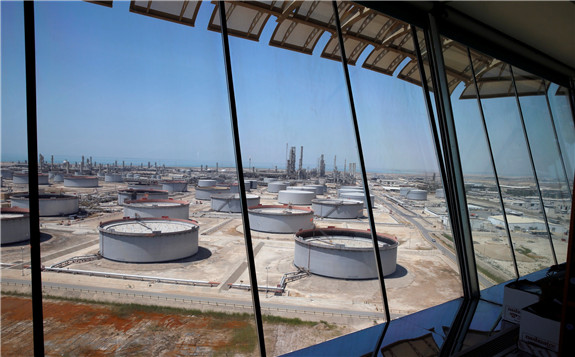Saudi Arabia slashed its export oil prices over the weekend in what is likely to be the start of a price war aimed at Russia but with potentially devastating repercussions for Russia’s ally Venezuela, Saudi Arabia’s enemy Iran and even American oil companies.

The effects were quickly felt, as the Brent global oil benchmark price collapsed by about $11 a barrel, or 25 percent, late Sunday in the sharpest decline since at least 1991, and stock market futures fell by about 3 percent.
The Saudi decision to cut prices by nearly 10 percent on Saturday was a dramatic move in retaliation for Russia’s refusal on Friday to join the Organization of the Petroleum Exporting Countries in a large production cut as the coronavirus continues to slow the global economy and, with it, demand for oil.
The cut added further uncertainly to global markets already roiled by the coronavirus. Australian stocks led a plunge in early Monday trading in the Asia-Pacific region, falling 5.9 percent. Tokyo shares fell 4.7 percent, and Hong Kong opened 4.1 percent lower. Futures markets indicated big losses for Wall Street and Europe when they open later on Monday.
The break in a three-year alliance between the Saudi-led oil cartel and Russia to support prices may be temporary. The moves over the weekend may well have been part of a negotiating chess game, and the Saudis and Russians can still reach a compromise. But if the collapse is lasting, oil executives say there is nothing to stop oil prices from tumbling to the lowest levels in at least five years.
“If a true price war ensues, there will be plenty of pain in the oil markets,” said Badr Jafar, president of Crescent Petroleum, a United Arab Emirates oil company. “Many will be bracing for the economic and geopolitical shocks of a low-price environment.”
A major drop in oil prices would hurt producers around the world, particularly Venezuela and Iran, whose oil-based economies are already under pressure from American sanctions. Export earnings of both countries have already been reduced to a trickle, and a further decline would stretch their abilities to pay for vital services and security.
The one bright spot may be at the gas pump. The average price of a gallon of regular gasoline in the United States, according to the AAA Motor Club, has already fallen five cents in the last week, to $2.40 from $2.45, and prices could easily drop below $2 a gallon in some states in the coming weeks. Lower-income drivers, who typically own older, less fuel-efficient vehicles and spend a higher percentage of their wages on energy, stand to gain the most.
But a prolonged price collapse would add to financial pressure on highly indebted American oil companies, dozens of which have gone out of business in recent years, with a decline in American oil production likely to follow. Oil companies have been laying off workers in Texas and other oil producing states.